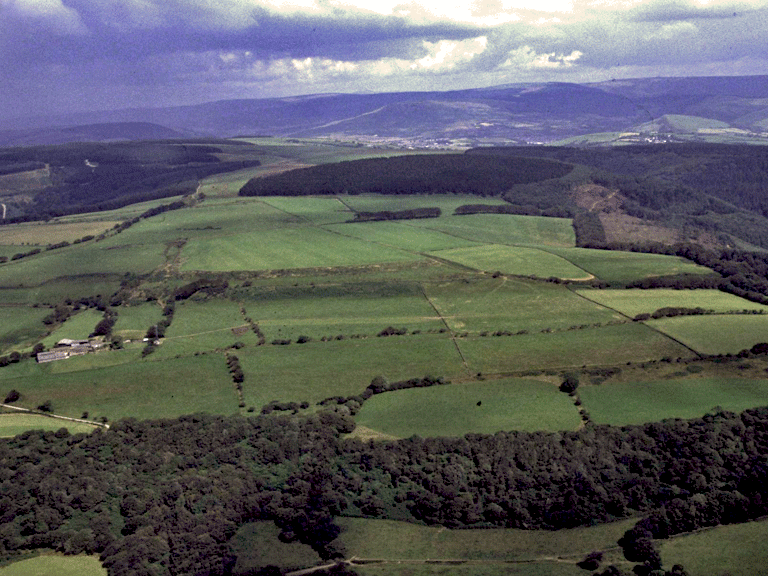Margam Mountain
016 Ton Mawr

HLCA 016 Ton Mawr
Enclosed agricultural landscape with possible medieval (or earlier origins); post-medieval settlement/fields; distinctive field boundaries; Ancient Woodland; footpaths and tracks. Back to Map
Historic Background
The historic landscape area of Ton Mawr, part of the Margam estate lands, once associated with Margam Abbey, encompasses an area traditionally layland (ie 'Ton', or 'Tir Porfa'), that is grazing land left fallow on a rotational basis. The field layout of the area, established by the early 19th century has evolved since; regular and linear fields are depicted on the 1814 survey with numerous quillets or strip fields shown, probably of medieval or early post-medieval date. By the publication of the 1st edition OS 6" map many of the latter have been amalgamated and the field pattern rationalised to produce the system in evidence today. Boundaries of medieval date are likely to remain fossilised in the surviving field pattern.
Historic Landscape Characteristics
Ton Mawr is characterised as an enclosed post-medieval agricultural landscape with possible medieval (or earlier origins). The area's archaeological resource is largely unknown, although its proximity to neighbouring areas of high archaeological content such as HLCA 001 Margam Abbey and Castle and HLCA 015 Upper Park and Ton-y-grugos might indicate significant, as yet unrealised potential. Post-medieval settlement, ie Ton Mawr Farm, and evolved but relatively regular medium sized fields, ranged along the lower SW facing slopes of Moel Ton Mawr are the dominant characteristics, along with distinctive field boundaries, including hedged banks, dry-stone walls and hedges. While an important tract of Ancient Woodland, Coed Ton-mawr defines the southern edge of the area along Graig-goch. Other characteristic features comprise agricultural footpaths and tracks.